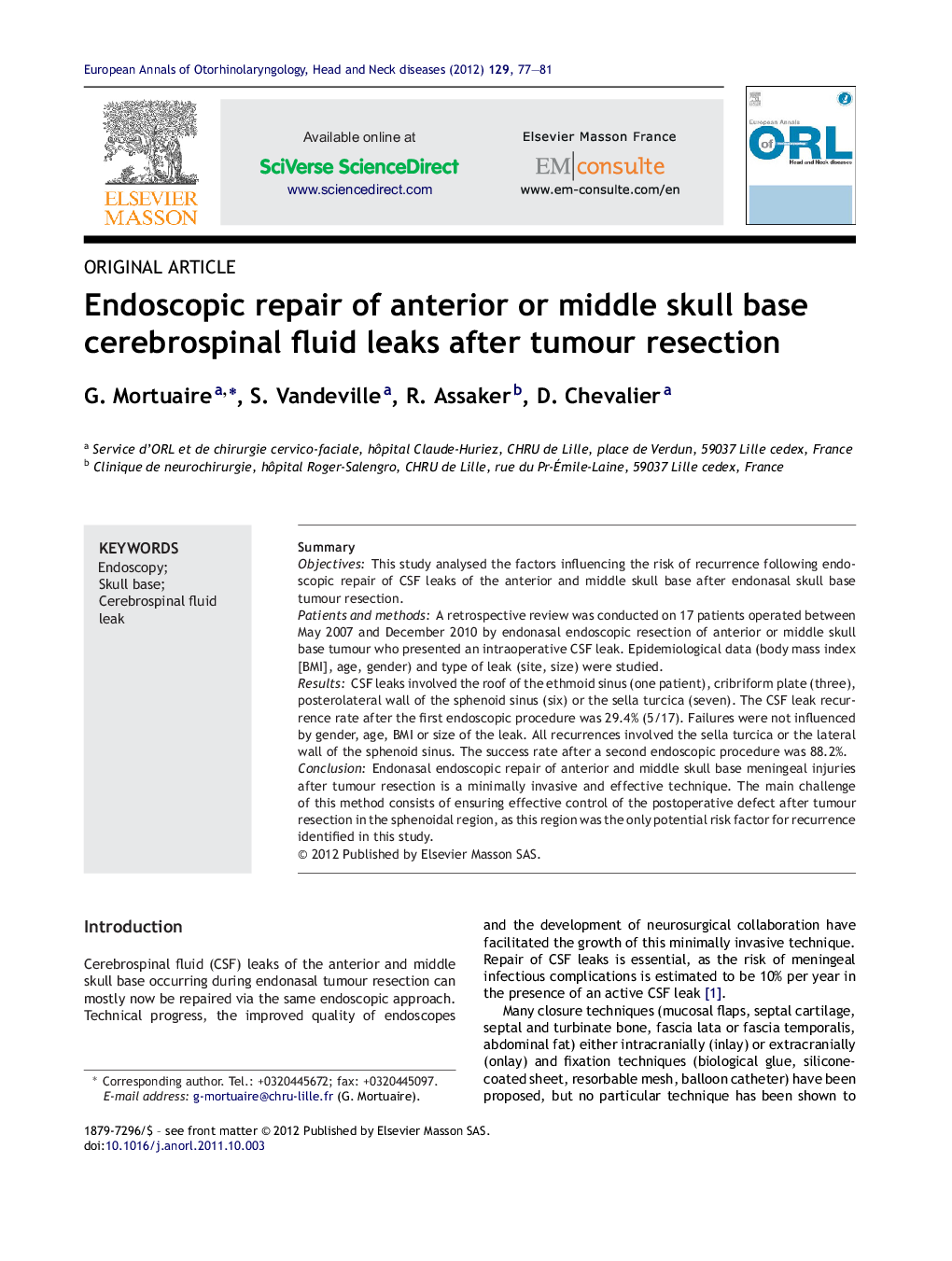| Article ID | Journal | Published Year | Pages | File Type |
|---|---|---|---|---|
| 4110332 | European Annals of Otorhinolaryngology, Head and Neck Diseases | 2012 | 5 Pages |
SummaryObjectivesThis study analysed the factors influencing the risk of recurrence following endoscopic repair of CSF leaks of the anterior and middle skull base after endonasal skull base tumour resection.Patients and methodsA retrospective review was conducted on 17 patients operated between May 2007 and December 2010 by endonasal endoscopic resection of anterior or middle skull base tumour who presented an intraoperative CSF leak. Epidemiological data (body mass index [BMI], age, gender) and type of leak (site, size) were studied.ResultsCSF leaks involved the roof of the ethmoid sinus (one patient), cribriform plate (three), posterolateral wall of the sphenoid sinus (six) or the sella turcica (seven). The CSF leak recurrence rate after the first endoscopic procedure was 29.4% (5/17). Failures were not influenced by gender, age, BMI or size of the leak. All recurrences involved the sella turcica or the lateral wall of the sphenoid sinus. The success rate after a second endoscopic procedure was 88.2%.ConclusionEndonasal endoscopic repair of anterior and middle skull base meningeal injuries after tumour resection is a minimally invasive and effective technique. The main challenge of this method consists of ensuring effective control of the postoperative defect after tumour resection in the sphenoidal region, as this region was the only potential risk factor for recurrence identified in this study.
